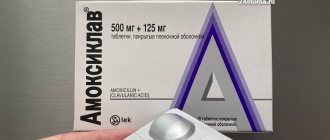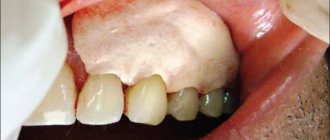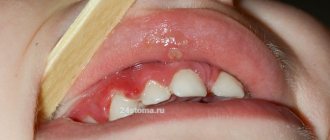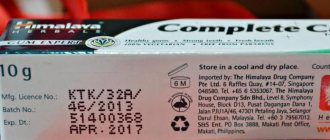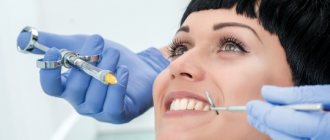While expecting a child, many mothers try to learn as much as possible about pregnancy and childbirth, believing that the most difficult thing is giving life to a new person. In movies, everything ends with a wedding, but in life, everything just begins with a wedding. It’s the same with motherhood: with the birth of a child, the fun begins. A young mother needs to accomplish so much in a day! And here it is important to properly distribute your time and energy. We will tell you about how to properly organize care for a newborn girl, what to pay attention to, in which cases to seek qualified help, and in which cases not to panic and just wait for time. This information will be useful not only to mothers of first-borns, but also to those who have their first baby in the family.
In the first days
During the first time after birth, a light gray or creamy coating - remnants of smegma, the original lubricant. If there is not a lot of plaque, it will gradually be absorbed into the skin. However, if the plaque is abundant, it is recommended to remove it, since after a day or two the fats it contains oxidize, causing the proliferation of microorganisms and, ultimately, inflammation. This plaque is quite dense, so it needs to be removed delicately, in several steps. It is best to use cotton swabs and warm boiled water for this. The plaque will be removed in pellets and will completely disappear in 2-3 days.
Indications for use
Composition and instructions for use of Sebozol shampoo
The instructions for use of the drug state that it can be prescribed in the following cases:
- Oral candidiasis in infants (thrush/stomatitis);
- Vaginal candidiasis and colpitis;
- Fungal infections of the throat and sore throat;
- Diaper rash on the skin, bedsores, cracks in the skin.
How to properly wash a newborn baby girl
The girl needs to be washed every time she changes her diaper, and simple wiping with wet wipes is unacceptable here. You can remove feces with napkins, after which you should definitely rinse the perineum under running water. Mom, of course, needs to wash her hands with soap before doing this. In the first months of life, it is advisable to rinse a girl’s genitals in the direction of the anus, so that feces particles do not enter the vagina and cause inflammation. For the same reasons, it is impossible to wash the girl in the basin after defecation. Older girls are washed as follows: first, they soap and rinse the anal area (from the bottom up, towards the tailbone; a stream of water is directed into the palm), then they wash their hands again and wash the external genitalia without soap (from the perineum to the pubis, without touching the anus ).
| This is important to know! Your excessive attachment to cleanliness may come back to haunt your daughter with synechiae - partial fusion of the labia minora, which most often occurs due to the fact that soap injures the thin mucous membrane of the girl’s genitals and causes an inflammatory process. |
Caring for a newborn girl after washing is performed in the following sequence: first, blot the genital area dry with a clean towel, then the labia and the skin around them, the inguinal folds, and only then the anus area. At this age, the skin and mucous membranes are dry and easily wounded, so they must be moisturized with baby cream or sterilized vegetable oil. Never wipe the inside of the labia, as this can disrupt the vaginal microflora and lead to genitourinary infections.
| This is important to know! On days 4–7 of life, a newborn daughter may experience mucous-bloody discharge from the vagina. This is how the hormones she received from you make themselves known. This phenomenon is called neonatal hormonal crisis , does not require treatment and goes away on its own within a few days. However, if the genitals are red, and the vaginal discharge is purulent and has an unpleasant odor, contact your pediatrician immediately! With the exception of a hormonal crisis, girls of this age should not normally have vaginal discharge. If any discharge appears, contact your pediatrician (pediatrician or pediatric gynecologist) without delay. |
Candida vulvovaginitis in the practice of a pediatric gynecologist
Z
A disease caused by fungi of the genus
Candida
is one of the most common lesions of the lower genital tract in girls.
According to the luminaries of domestic pediatric gynecology, fungi of the genus Candida
are found in more than half of the cases of chronic recurrent vulvovaginitis in girls of preschool age and in 24–25% of adolescents with inflammatory diseases of the genital organs (M.N. Kuznetsova, 1998; Yu.A. Gurkin , 2000).
Risk factors for candidiasis
Analysis of incidence by age showed that the maximum proportion of vulvovaginal candida occurs in the neonatal period, at the ages of 3, 7 years and adolescence
.
The first rise is explained by the possibility of vertical intrauterine transmission of infection from the mother, the frequent use of antibiotics in the treatment of newborns without covering them with antimycotic drugs, and the increased risk of infection by nosocomial Candida strains.
The second rise is due to a decrease in parents’ attention to the toilet of the external genitalia in children, as well as the most pronounced allergization of children 2–3 years old. The third rise is associated with insufficient hygienic skills of girls, an increase in the number of colds and enterobiasis at the age of 7 years [Shushunova, V.G. Balasanyan, 2001]. It should be noted, however, that compared with other age periods, vulvovaginal candida in girls before menarche is extremely rare. In the pubertal period of life, a slight increase in the frequency of genital candidiasis is usually due to inadequacy of hormonal ratios during the menstrual cycle. A deficiency of estrogen saturation in the vaginal epithelium leads to insufficient development of lactobacilli, which are the main competitor of fungi in the vaginal biotope. A sharp increase in incidence is observed in women who begin sexual relations.
The increased risk of candida infections in children may be associated with a decrease in the body's resistance against the background of hypovitaminosis, imbalance of vaginal microflora, and immunodeficiency. Among the diseases accompanied by immunosuppression of varying severity in children, a special place is occupied by acute and recurrent diseases of the oropharynx, systemic infectious diseases, endocrine pathology (hypogonadism, hypothyroidism, diabetes mellitus, adrenal hypofunction), impaired local and general circulation, neutropenia and agranulocytosis, dysbacteriosis intestines, hypovitaminosis and deficiency of microelements, zinc, iron and magnesium. Candida vulvovaginitis in children is often a manifestation of colonization by fungi of the genus Candida
the oral cavity, intestines and surrounding skin, which, in turn, are determined by the characteristics of diet, hygienic living conditions, the stay of girls in hospitals infected with hospital strains of yeast, etc. The occurrence of genital candidiasis is often facilitated by prolonged and often uncontrolled use of antibiotics and corticosteroid drugs and cytostatics. As is known, taking most antibiotics without covering them with antifungal drugs leads to a decrease in colonization resistance of the vagina and thereby facilitates the adhesion of fungi to the surface epithelium and their subsequent reproduction. In addition, antibiotics, corticosteroids and cytostatics cause a decrease in the content of secretory immunoglobulin, which provides local and general resistance of the child’s body to infection. Not only oral antibiotics, but also local preparations containing iodine, as well as clindamycin and metronidazole, predispose to candidiasis.
The importance of sexual transmission of fungi is small, although infection from a partner with an acute stage of genital candidiasis is not denied.
A proven risk factor for the development of vaginal candidiasis is the physiological change in hormonal levels in women of young and childbearing age during pregnancy and when taking combined oral contraceptives, especially the first generation with a high estrogen content. The lack of cyclicity in the secretion of sex steroids both during pregnancy and while taking combined oral contraceptives leads to the fact that progesterone inhibits the process of blast transformation of lymphocytes to Candida
, and estrogens suppress neutrophil function. Along with this, fungal cells that have sex hormone receptors respond to changes in the hormonal environment by increasing their adhesive ability.
There is information about the development of vaginal candidiasis in sexually active adolescents who used modern barrier methods of contraception (spermicides and condoms containing nonoxynol-9) and practicing oral sex (Nyirjesy P. et al., 1995).
Pathogen
Fungi of the genus Candida
belong to opportunistic aerobic microorganisms that lack the sexual stage of the life cycle and grow predominantly in the yeast phase, i.e.
reproducing by budding. Thanks to this property , Candida
got their name - yeast fungi.
The use of the term “yeast-like” from a modern point of view does not correspond to the true biology of the development of fungi of the genus Candida
.
The fungal cells, surrounded by a distinct multilayered wall, may have a round, ellipsoidal, oval or cylindrical shape in the yeast stage of development and a hypha-like shape in the mycelial or tissue stage of Candida
. Yeast fungi do not form true mycelium, but due to the contact of elongated cells, pseudomycelium and mitospores (asexual spores) of the fungal community are formed.
In the slightly acidic environment of the vagina at normal human body temperature, fungi of the genus Candida
receive the most favorable conditions for growth and reproduction.
In the mycelial phase, Candida
attaches to the vaginal epithelium. Pseudomycelium has the ability to penetrate deep into up to 4–6 layers of the epithelium, which allows the fungi to resist the natural defense factors of the macroorganism and survive against the background of nonspecific sanitation of the vagina. An increase in body temperature to 40–42°C slows down the growth, but not the death, of fungal cells. Stopping growth is possible when the fungal culture is heated to 50°C, and complete destruction of the cells is only possible during the boiling process.
Among the 150 known species of Candida
only 20 strains are true pathogens of vaginal candidiasis, and the leaders among pathogens are only 4 species -
Candida albicans
,
Candida tropicalis
,
Candida parapsilosis
and
Candida glabrata
.
Fungi of the genus Candida
are commensals of many warm-blooded animals, as they are part of the permanent microflora of the digestive tract, especially the large intestine.
Candida albicans
,
Candida tropicalis
and
Candida parapsilosis
can be found on the skin of a healthy person around natural openings, in the mouth, and on the skin of the hands.
In 10–30% of healthy women, a “silent” carriage of Candida albicans
and
Candida glabrata
in the vagina is detected.
At the same time, according to a number of foreign authors (Cox RA, 1997; Farrington PE, 1997; Koumantakis EE, 1997; Vexiau-Robert D., 1996), Candida was in second place among the causative agents of vulvovaginitis in children
.
According to A.Yu. Sergeeva et al. (2001), Candida
albicans is isolated in at least 80% of cases of genital candidiasis and is more pathogenic than other types of yeast fungi.
Candida
fungi are isolated in 15–30% of cases of vulvovaginal candidiasis.
Candida glabrata
is the second causative agent of vaginal candidiasis after
Candida albicans
, especially in patients who are not amenable to traditional treatment with imidazole drugs and, as a result, have a chronic, relapsing course of the disease.
Mycologists assign a conditional third place in the etiology of vaginal candidiasis to Candida tropicalis
, less often –
Candida krusei
and
Candida parapsilosis
.
It has been noted that Candida parapsilosis
most often colonizes the skin of the fingers, especially the bed under the free edge of the nails. This property of fungi has created an increased risk of transmission of the pathogen through the hands of medical personnel onto instruments, syringes, droppers and solutions for parenteral nutrition, artificial endoprostheses, etc.
Accelerated spread of vaginal candidiasis caused by yeasts other than Candida albicans
, led to the coining of the term
non-albicans candidiasis
(NAC). Some researchers are inclined to attribute NAC to a complicated fungal infection of the genitals, explaining this interpretation by the frequent association of NAC with a chronic relapsing course of the disease, difficult to cure with traditional antifungal drugs. There are a number of clinical, epidemiological and laboratory characteristics that allow the clinician to diagnose NAC. A similar diagnosis can be assumed in patients with relapses of vulvovaginal candida after repeated use of azole antimycotics, in patients who complain of itching with slight or unnoticeable discharge from the genital tract, in girls with manifestations of bacterial vaginosis, when a concomitant sexually transmitted infection is detected, and also in the absence of pseudomycelium of the fungus on microscopy of a vaginal smear.
Clinical picture
According to the course of the disease in children , candidiasis, acute, chronic, recurrent and persistent (complicated) forms of vulvovaginal candidiasis, as well as secondary candidiasis of the vulva and vagina are distinguished.
against the background of non-fungal lesions of the genital organs (lichen planus, pemphigosis, Behcet's disease, lichen sclerosus, etc.).
Candidiasis is diagnosed only if there is no increase in the number of fungal colonies in 5–6 bacteriological cultures of vaginal discharge, successively carried out at intervals of a week. The acute form lasts no more than 2 months. The recurrent form should be understood as the presence of 4 or more episodes of vivid clinical manifestations of the disease in one year, alternating with latent periods of candidiasis. In the persistent form, the symptoms of the disease persist constantly, subsiding somewhat after sanitization of the vagina or antimycotic treatment.
The main symptoms of the disease in children are severe itching in the perineum and burning sensation when urinating.
. The itching may be constant or worsen when in a warm bed, after a hot bath, after a long walk, or when using synthetic underwear or sanitary pads. In the area of the vulva and labia, itching is usually most intense and is accompanied by scratching. Pain and burning in little girls can cause fear of urination, and in rare cases lead to the development of clinical manifestations of acute urinary retention. Severe constant itching often leads to sleep disturbances and increased irritability of the girl, up to the appearance of pronounced neurotic reactions. In sexually active adolescents, pain and a burning sensation in the vulva and vagina lead to fear of sexual intercourse, which also contributes to the formation of neurotic disorders and pathological attitudes toward sex.
On examination of a patient with acute vulvovaginal candida
There is marked hyperemia and swelling of the external genitalia, vulvar ring and vaginal walls. Light, creamy or cheesy vaginal discharge has a mild sour odor. Less commonly, the discharge acquires a watery consistency with an admixture of curdled crumbs. For children, the pseudomembranous form of the disease, commonly called “thrush,” is more typical. Between the labia minora, in the vestibule and on the walls of the vagina, islands of a thin grayish-whitish coating are detected, which, unlike diphtheria damage to the mucous membranes, is easily removed, revealing bleeding areas of bright hyperemia. Maceration, large red erosive lesions of the skin with whitish exfoliating epidermis along the periphery (candida intertrigo), scratching and swelling sometimes spread to the skin of the perineum in the area of the inguinal folds and inner thighs. The affected area has a purple tint, a varnish shine, confluent erosions are not accompanied by abundant weeping, are clearly delineated from the surrounding unaffected tissue, small blisters, pustules or erythematous-squamous elements can be found along the periphery of the lesions.
Chronic stages of candidiasis
are characterized by a lower prevalence of lesions, less intense hyperemia and swelling, and few plaque films. In menstruating, untreated girls, the symptoms of vulvovaginal candida resume before the next menstruation and subside somewhat on menstrual days. Chronic forms are characterized by the presence of infiltration and cracks in the clitoris, labia, perineum, and perianal area. Shininess and lichenification (rough folds) of the skin of the labia and around the vaginal opening appear. Changes in the external genitalia may resemble kraurosis, as the skin and mucous membranes become brown in color, become flabby and atrophic, the labia majora and minora are smoothed and wrinkled, and the vestibule of the vagina narrows. With the erythematous (atrophic) type of chronic genital candidiasis, vaginal discharge and plaque are absent, and spots of thin, hyperemic or slightly cyanotic epithelium are detected on the mucous membrane of the vestibule and vaginal walls. Along with damage to the genital organs, candida stomatitis, intestinal candidiasis, and candida tonsillitis can be detected.
Laboratory diagnostics
Laboratory diagnosis of vulvovaginal candida requires direct microscopy of fresh material
, taken mainly from the anterior wall of the vagina.
For microscopy, both unstained native preparations prepared in a drop of saline and smears stained with Gram, Romanowsky or methylene blue are used. Pay attention to the presence of pseudomycelium and yeast cells, the number of leukocytes, and the composition of associates. It should, however, be remembered that the detection of vegetative forms (budding cells and pseudomycelium) allows one to determine the number of fungi, but does not provide information about the pathogenic properties and activity of the infectious process. On the other hand, the absence of pseudomycelium is not always a criterion for excluding candidiasis, since the latter could be caused by other species of Candida
. Positive microscopy results correspond to an excess of fungal colony-forming units (CFU) content of more than 103 in 1 ml of material. The absence of clinical manifestations when more than 104 CFU/ml of fungi is isolated should be regarded as asymptomatic candidiasis. In the presence of a clinical picture, supported by a positive smear microscopy, candida lesions of the genitals are beyond doubt. The cultural diagnostic method (like the PCR method) is not a highly specific and standard method for diagnosing vulvovaginal candida. However, only with the help of these methods is it possible to identify the genus and species of fungi and adequate subsequent selection of systemic antimycotic therapeutic effects.
Treatment
For the treatment of children with vulvovaginal candida, the principle of mandatory elimination (eradication) of the pathogen is applied. It should be remembered that first of all it is necessary to create conditions that are detrimental to the life of cells of the fungus of the genus Candida
, and only then eliminate disorders of the vaginal microcenosis and deal with the correction of background conditions and diseases.
Moreover, given the easy colonization of Candida
, it is important to understand that complete destruction of fungal cells
in vivo
is not possible. The expected result of treatment is the removal of the pathogen in order to eliminate the main clinical manifestations, or to block the proliferation of fungi for the duration of one of the factors predisposing to the development of candida lesions of the mucous membranes (prevention).
To prevent colonization of the mucous membranes of the oral cavity, intestines and vagina, so-called local forms are used. Oral polyene antibiotics (nystatin, amphotericin B, natamycin, levorin) are usually used. These drugs do not have a systemic effect, but only sanitize the intestinal tube, since their absorption in the intestine is minimal. Candida fungi
a good effect is achieved by oral administration of imidazole drugs (clotrimazole, ketoconazole, miconazole).
It is interesting to note that the use of eubiotics to correct intestinal dysbiosis in vaginal candidiasis has not received explicit scientific confirmation, although it is still actively recommended by pediatricians and pediatric gynecologists. Preventive sanitation of the vagina is possible with the help of vaginal tablets, suppositories, gels, solutions and ointments containing any antifungal substances. However, it should be taken into account that in patients with long-acting and pronounced predisposing factors for candidiasis, polyene antibiotics and local forms are little effective. The best means of prevention for such patients are antifungal drugs of the triazole series, in particular, itraconazole and fluconazole
(
Mikosist
, etc.).
The mechanism of action of Mikosist is due to inhibition of the synthesis of ergosterol, which is part of the cell membrane of fungi. The drug has a highly specific effect on fungal enzymes dependent on cytochrome P450. Treatment with Mikosist can be started until results of culture and other laboratory tests are available.
, further dose adjustment is necessary. Mikosist in children and adolescents is prescribed in a dose not exceeding the daily dose for adults.
The results of numerous studies indicate high effectiveness (up to 99%) of a single dose of fluconazole in patients with intact immunity.
Most cases of acute and severe fungal vulvovaginitis in children and adolescents can be treated with local antimycotic agents and antiseptics. The advantages of locally applied drugs are systemic safety, high concentrations of drugs in the affected area, rapid disappearance of painful symptoms of the disease, and a lower likelihood of developing Candida
. Local preparations are more diverse in composition than systemic antimycotics, since many of them are suitable only for local use due to systemic toxicity. According to the source of production, all antifungal drugs are divided into waste products of microorganisms and synthesized chemicals.
For local treatment of vulvovaginal candida
in girls, you can use suppositories with polyene antibiotics (nystatin, levorin, natamycin) and azole drugs (clotrimazole, etc.), which a pediatric gynecologist or a nurse trained by him injects daily into the vagina.
Before the first introduction of suppositories or vaginal tablets, it is advisable to irrigate the vagina through a catheter with a solution of baking soda and boric acid, antiseptics with a fungistatic effect (octenisept solution, 2% sodium tetraborate solution, miramistin solution, aqueous solutions of aniline dyes). Long-term use of local antiseptics most often turns out to be ineffective, since the effect of use ends soon after their discontinuation.
The duration of treatment should be 6 days for natamycin and clotrimazole and at least 10 days for nystatin, levorin and miconazole, which is not always appropriate for outpatient management of young girls. Therefore, nowadays, suppositories with econazole are increasingly used for local treatment of vulvovaginal candida in children, which are inserted deep into the vagina, 1 suppository per night for 3 days. Gyno-travogen and gyno-trozid, despite their prolonged (up to 1 week) effect after a single administration of 1 suppository, turned out to be less popular among pediatric gynecologists, which may be due to wariness in relation to the allergic reactions noted in the annotation and the high cost of the drugs. The use of ketoconazole (Nizoral) in children is limited due to its severe side effects. In patients with vulvovaginitis and severe damage to the skin of the external genitalia, antibiotics and antimycotics can be injected not only deep into the vagina, but also applied in the form of gels and ointments to the vulva, the area of the external urethral opening and the perineum.
In the presence of an association of pathogenic fungi of the genus Candida
with other urogenital infections, it is advisable to use
combination drugs
that simultaneously contain an antimycotic and other antimicrobial agents. In the practice of a pediatric gynecologist, it makes sense to more widely use Macmiror-complex (nitrofurantel and nystatin), Terzhinan (ternidazole with neomycin, nystatin and prednisolone), Polygynax (neomycin, nystatin and polymyxin), Klion-D (metronidazole) to eliminate mixed infections of the lower genital tract and miconazole nitrate). The use of combined local drugs in some cases allows one to avoid the prescription of oral antibiotics, which worsen vaginal candidiasis.
It is important to note that most topical azole derivatives are not recommended for use in young women wishing to continue pregnancy. If necessary, their use is permitted in the first trimester of the gestational process. In addition, it should be remembered that the administration of imidazole derivatives together with polyene antibiotics causes a mutual weakening of the effects.
In girls with chronic, recurrent, complicated or persistent superficial candidiasis, including vulvovaginal candida, the combined use of systemic and local forms of antimycotics
one line, or parallel use of local antiseptics and fungistatics with systemic antifungal drugs. The advantage of the latter is the ease of administration, minimizing the duration of treatment, as well as the possibility of a highly effective effect on the pathogen at any location.
Triazole compounds occupy a special place among systemic antimycotics.
, of which
fluconazole
(
Mikosist
, etc.) is the most common in Russia.
Fluconazole is considered the drug of choice due to its high selective activity against Candida albicans
, pharmacokinetics and ease of use.
Since triazole compounds are well absorbed, preference should be given to oral administration of the drug. Parenteral administration is acceptable if it is impossible to take the medicine by mouth. For uncomplicated vulvovaginitis of candida etiology, it is enough to use the drug once, and in patients with a torpid or severe course of the disease, the duration of treatment depends on the species of the fungus in the Candida
and on the depth of the lesion. The pediatric dose of the drug for candidiasis of the skin and vagina is 2 mg/kg of the child’s body weight, while in children over 12 years of age a standard daily dose of 50 or 150 mg of fluconazole should be used. The general recommendation for the treatment of complicated forms of genital candidiasis is to increase the duration of taking the drug in standard doses to 10–14 days.
It should be remembered that the most common reason for treatment failure is
Vulvovaginal candida is failure to follow doctor’s recommendations and unsystematic self-medication with local antiseptics and antimycotics prior to visiting a doctor.
The situation was complicated by the penetration of low-quality generics and sometimes even counterfeit drugs into the Russian pharmacopoeial market. Along with this, a frequent mistake in the medical management of sick children is ignoring the bacteriological examination of the culture of the vaginal contents in order to identify the species of the pathogen and determine its sensitivity to the main antimycotic drugs. The fight against relapses of vulvovaginitis of fungal etiology should include mandatory correction of background and predisposing conditions
. In this regard, it is of interest to use the immunomodulator Gepon, which has interferon-inducing activity and the ability to quickly eliminate the most characteristic clinical manifestations of vulvovaginal candida (itching, pain, redness of the inflamed tissue significantly decreased by the 2nd day of use of the drug). Presumably Gepon inhibits the production of proteinases by fungal cells, which are one of the leading components of inflammation. According to Perlamutrov Yu.N. and his colleagues (2001), Tishchenko A.L. et al (2001), three-time irrigation of 5 ml of 0.04% Gepon solution (single dose of 2 mg) of the mucous membranes of the vagina and perineal skin with an interval of 2-3 days not only had a pronounced clinical anti-inflammatory effect, but also made it possible to achieve clinical and etiological cure in 84% of patients with genital candidiasis.
The effectiveness of treatment for vulvovaginal candida is determined every 10 days of treatment, as well as 40 days and 3–4 months after the end of antimycotic etiotropic treatment, taking into account clinical and laboratory characteristics of the quantitative and species composition of the vaginal biotope and the severity of its colonization by fungi of the genus Candida
.
Bathing
- You can bathe a newborn girl as soon as the umbilical wound dries. Up to six months, baths should be daily, then you can bathe the baby every other day, and when she reaches a year, even less often, replacing bath procedures with showers.
- You should carefully wash all the folds and spaces between your fingers and toes.
- It is recommended to use soap (not toilet soap, but a special one for children, with a minimum amount of additives!) or baby foam no more than 1-2 times a week, and do not add it to water, but apply it to the skin and wash it off with a shower. Soapy water dries out the vaginal mucosa. There is an opinion that until the moment the child begins to crawl on the floor (i.e., until the moment when he can really get dirty) or until the moment when the baby begins to eat complementary foods (i.e., smearing porridge on his face with his hands or puree) - there is no point in washing it with soap, because the child does not get dirty with anything and is constantly either in the arms of his parents or in a clean crib. And once again disturbing his skin with soap products is not only pointless, but also harmful - the protective layer of the skin is washed off. But, firstly, daily bathing in clean water is still necessary, and secondly, this does not exclude washing the child with soap after he pooped.
- Adding various herbal infusions to the bath is at your discretion. However, it must be borne in mind that almost all of them dry out the already dry skin of babies. At the end of winter and spring in cities, an increased amount of chlorine is added to the central water supply, which greatly dries out the skin of children during daily bathing. In this case, it is recommended to add special softeners to the bathing water, for example, calendula bathing agent (Weleda has this). And after bathing, lubricate the baby’s skin with baby oil.
- A newborn girl should use her own, purely individual, bathing set: towel, washcloth and mitten. By the way, you can wash the baby with a piece of gauze instead of a washcloth, since it can be washed and boiled.
- After bathing, the newborn girl is blotted dry with a clean towel or warm sheet, and the skin folds, if necessary, are treated with baby hygienic oil.
Sodium tetraborate: definition and composition
Sodium tetraborate is a derivative of boric acid. Simply put, it is borax (a salt that is formed as a result of the interaction of boric acid and sodium) enclosed in glycerin. The drug is sold in the form of a solution, bottled in tinted glass bottles with a capacity of 30 ml. The composition of the drug is 20% borax and 80% glycerin.
The main properties of sodium tetraborate are antiseptic and bacteriostatic. The use of the drug helps to destroy the Candida fungus. In addition, the product prevents the attachment of the fungus to the child’s oral mucosa and at the same time destroys the cell membrane of the pathogenic flora. At the same time, glycerin, which is part of the drug, is aimed at enhancing the effect of borax and at the same time softening the mucous membranes.
It is worth knowing that throughout the world the use of sodium tetraborate for newborns is not approved, since the drug is considered to be quite toxic. However, in practice, if the recommendations for safe use are followed, the use of borax is effective and does not cause problems.
Important: the use of sodium tetraborate should be prescribed exclusively by the treating pediatrician. Self-administration of any medications to an infant is strictly prohibited.
Ear care
Contrary to popular belief, sulfur is not dirt, but a means of protecting the body. It has bactericidal properties and protects the ear canal from drying out, dust, wind and water. Therefore, do not be zealous in removing it. The maximum that is allowed is to carefully remove with a cotton wool the wax that is in the visible zone, that is, it has come out of the ear canal into the auricle. Each ear has a separate flagellum. Do not use cotton swabs under any circumstances, do not penetrate the swab into the ear canal - this can lead to the pushing of sulfur deeper and the formation of cerumen plugs.
During bathing, the ears are carefully washed with water. If water gets into them, simply blot your ears with a towel. The main thing is to make sure that there are no drafts in the room.
The skin behind the ears requires special attention. Rinse it during bathing and lubricate it with baby oil, especially if there are crusts. Decoctions of skin-soothing herbs and creams with zinc oxide help with diaper rash.
| This is important to know! If erosion occurs at the site of diaper rash, be sure to consult your pediatrician. Incorrect treatment in this case can result in unpleasant consequences for the baby. |
Possible adverse reactions
It is worth understanding that when using borax in the treatment of thrush in newborns, the following adverse reactions may occur:
- Moderate redness in areas where the mucous membrane was treated with the drug;
- Burning and itching;
- Swelling in the form of an allergic reaction;
- Rash.
In case of an overdose of the drug, the baby may experience the following reactions:
- Abdominal pain;
- Vomiting, diarrhea;
- Weakness and cramps;
- Headache.
If the mother observes similar symptoms of overdose in the baby, it is necessary to take the newborn to the hospital as soon as possible for detoxification procedures. In this case, the baby will undergo gastric and intestinal lavage, as well as IV drips to restore water and electrolyte balance.
Instructions for the use of Taktivin injections and analogues
To prevent the risk of overdose, it is recommended to use the drug in newborns for no more than seven days and only in minimal doses. If, during treatment with sodium tetraborate, the baby’s thrush does not go away within a week, it is advisable to contact the pediatrician again to make an accurate diagnosis and prescribe a new treatment.
Important: it is strictly forbidden to use borax in combination with drugs based on clotrimazole and other antifungal components. It is also prohibited to use boric acid with corticosteroids and phenol.
Nasal care
It is necessary to carefully ensure that snot and crusts do not accumulate in the girl’s nose and that she has the opportunity to breathe fully. Therefore, you need to clean your baby’s nose, if it is filled with crusts, every day. The crusts are pre-softened using sterile vegetable oil. To clean the nose, it is preferable not to use store-bought cotton swabs: those with a limiter will not be able to penetrate to the required depth, and without limiters you risk damaging the baby’s nasal mucosa. Prepare small flagella (“turundas”) from cotton pads and, carefully inserting them into the nostrils, clean out the contents of the nose with gentle rotational movements. It is better not to use children's nasal aspirators, because... with frequent use, you can damage the nasal mucosa and disrupt its microflora. In addition, there is an opinion among experts that the recently noted earlier appearance of adenoids in children, the proliferation of the nasal mucosa, is also a consequence of too zealous care of the nasal mucosa by parents (frequent use of aspirators, nasal sprays, etc.) .

